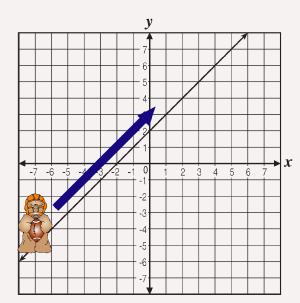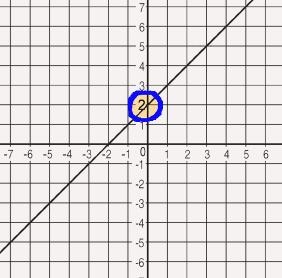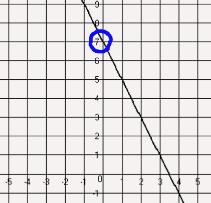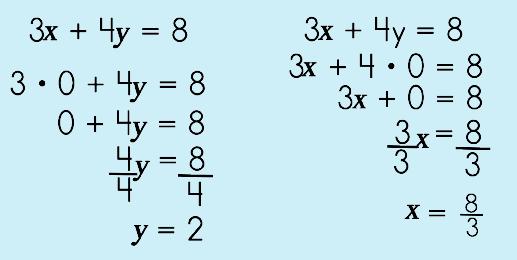|
 |
|
|
 |
|
|
|
For those of you who watch or play football, then you are familiar with the term 'interception.' For those of you who aren't, well, stop and think for just a second what interception just might mean…
Why all this talk about football? Isn't this a website about math? Yeah, sure but let's take a look at football for a second and then make the connection to math, shall we?
|
|
|
 |
|
|
|
In a linear equation, y = mx + b,
- a point where the line crosses the y-axis
- it is the number when x is zero (0)
- is represented by the letter b in the linear equation y = mx + b
|
|
|
 |
|
|
|
 |
|
|
In football, a quarterback (offensive player) for team A throws a pass. Unfortunately, a defensive player from team B intercepts the ball before someone from team A can catch it.
|
|
|
 |
|
|
Team B is thrilled! They have thwarted the other team! Bummer for Team A…
So, how does all of this relate to math and linear equations?
|
|
|
|
Pretend that the quarterback is throwing the ball and the path it is taking is the line.
Here is a picture to help you 'get' it. We always read from left-to-right so the quarterback is on the left. He throws the ball to the right so the ball is going UP. Let's see what happens.
|
|
|
|
|
Team B (the y-axis) intercepts the pass. In this picture, the point of interception is circled.
This means that the point where the line crosses the y-axis is the point of interception or the y-intercept.
The point the line crossed is at (0, 2).
In the linear equation formula, y = mx + b, think of the b as ball.
In a coordinate pair your numbers are set up (x, y). If we are looking for the 'y' for our ball for the y-intercept, which one would it be from our point? Did you say 2? Hooray!
Just substitute THAT number in the equation!
- y = mx + 2
|
|
|
|
 |
|
|
 |
|
|
|
|
Cool! Now that you understand the vocabulary from a football point-of-view and you know the definition of what a y-intercept is, let's see how you can find the y-intercept from looking at a graph.
|
|
|
|
 |
|
|
Step 1: Look at the line. Find where it crosses the y-axis.
|
|
|
|
|
 |
|
|
Step 2: Draw a CIRCLE around the point where the line crosses the y-axis.
|
|
|
|
|
 |
|
|
Step 3: Write down the basic linear equation form y = mx + b.
Substitute the number you circled for the b.
|
|
|
|
 |
|
|
|
|
Step 4: Go find the slope to finish your equation! y = mx + b.
|
|
|
 |
|
|
|
So, after all this y-intercept talk, what about the x-intercept? Huh?
Here's the deal…you have been working with the x-intercept but just didn't know it. The x-intercept is the point where the line crosses the x-axis. (Duh!) Think about it…the y-intercept is the point where a line crosses the y-axis, right? So, doesn't it make sense that the x-intercept is the point where the line crosses the x-axis? See? It isn't anything new.
The BIG question now isn't going to be finding it on the graph but how do you find it if you have an EQUATION like this:
|
|
|
|
 |
|
|
|
How do you find both the y- and x-intercept in an equation like this?
This isn't as hard as it may seem. Check it out.
|
|
|
|
Step 1: Substitute ZERO for each variable.
- To find the x-intercept, substitute the y with a 0.
- To find the y-intercept, substitute the x with a 0.
|
|
|
 |
|
|
|
Step 2: Solve for the variable in the equation.
- The equation on the left side gives you the y-intercept!
- The equation on the right side gives you the x-intercept!
|
|
|
|
 |
|
|
That's it! Voila!
Easy-peasy, lemon-squeasy!
|
|
|
|
|
|
©2011–2017 Sherry Skipper Spurgeon.
All Rights Reserved.
|
|
 |
 |
 |
 |
 |
 |
 |
 |
 |
 |
 |
 |
 |
 |
 |
 |
 |
 |
 |
 |
 |
 |
 |
 |
 |
 |
 |
 |
 |
 |
 |
 |
 |
 |
 |
 |
 |
 |
 |
 |
 |
 |
 |
 |
 |
 |